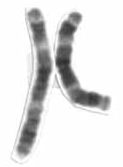
Photo from wikipedia
Introduction The risk of infection with COVID-19 is high in lung adenocarcinoma (LUAD) patients, and there is a dearth of studies on the molecular mechanism underlying the high susceptibility of… Click to show full abstract
Introduction The risk of infection with COVID-19 is high in lung adenocarcinoma (LUAD) patients, and there is a dearth of studies on the molecular mechanism underlying the high susceptibility of LUAD patients to COVID-19 from the perspective of the global differential expression landscape. Objectives To fill the research void on the molecular mechanism underlying the high susceptibility of LUAD patients to COVID-19 from the perspective of the global differential expression landscape. Methods Herein, we identified genes, specifically the differentially expressed genes (DEGs), correlated with the susceptibility of LUAD patients to COVID-19. These were obtained by calculating standard mean deviation (SMD) values for 49 SARS-CoV-2-infected LUAD samples and 24 non-affected LUAD samples, as well as 3,931 LUAD samples and 3,027 non-cancer lung samples from 40 pooled RNA-seq and microarray datasets. Hub susceptibility genes significantly related to COVID-19 were further selected by weighted gene co-expression network analysis. Then, the hub genes were further analyzed via an examination of their clinical significance in multiple datasets, a correlation analysis of the immune cell infiltration level, and their interactions with the interactome sets of the A549 cell line. Results A total of 257 susceptibility genes were identified, and these genes were associated with RNA splicing, mitochondrial functions, and proteasomes. Ten genes, MEA1, MRPL24, PPIH, EBNA1BP2, MRTO4, RABEPK, TRMT112, PFDN2, PFDN6, and NDUFS3, were confirmed to be the hub susceptibility genes for COVID-19 in LUAD patients, and the hub susceptibility genes were significantly correlated with the infiltration of multiple immune cells. Conclusion In conclusion, the susceptibility genes for COVID-19 in LUAD patients discovered in this study may increase our understanding of the high risk of COVID-19 in LUAD patients.
Journal Title: Computational and Structural Biotechnology Journal
Year Published: 2021
Link to full text (if available)
Share on Social Media: Sign Up to like & get
recommendations!